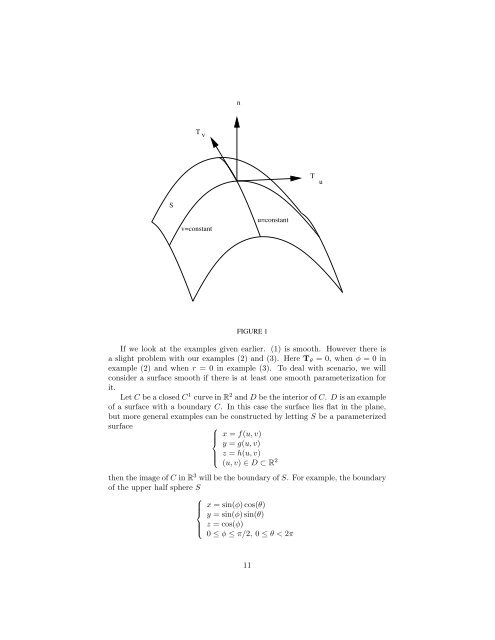Introduction to differential forms
Introduction to differential forms
Introduction to differential forms
You also want an ePaper? Increase the reach of your titles
YUMPU automatically turns print PDFs into web optimized ePapers that Google loves.
n<br />
T v<br />
T<br />
u<br />
S<br />
v=constant<br />
u=constant<br />
FIGURE 1<br />
If we look at the examples given earlier. (1) is smooth. However there is<br />
a slight problem with our examples (2) and (3). Here T θ = 0, when φ = 0 in<br />
example (2) and when r = 0 in example (3). To deal with scenario, we will<br />
consider a surface smooth if there is at least one smooth parameterization for<br />
it.<br />
Let C be a closed C 1 curve in R 2 and D be the interior of C. D is an example<br />
of a surface with a boundary C. In this case the surface lies flat in the plane,<br />
but more general examples can be constructed by letting S be a parameterized<br />
surface ⎧⎪ x = f(u, v)<br />
⎨<br />
y = g(u, v)<br />
⎪ z = h(u, v)<br />
⎩<br />
(u, v) ∈ D ⊂ R 2<br />
then the image of C in R 3 will be the boundary of S. For example, the boundary<br />
of the upper half sphere S<br />
⎧<br />
⎪⎨<br />
⎪⎩<br />
x = sin(φ) cos(θ)<br />
y = sin(φ) sin(θ)<br />
z = cos(φ)<br />
0 ≤ φ ≤ π/2, 0 ≤ θ < 2π<br />
11








